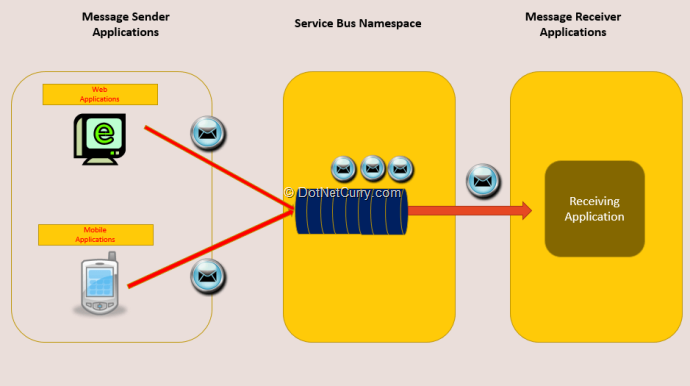
The asynchronous nature of operation offers flexible, brokered messaging, along with structured first-in, first-out messaging and publish/subscribe capabilities. Azure Service Bus is a multi-tenant and fully managed cloud messaging service that is used to send information between applications and services. To start with, let us have a brief introduction on Azure Service Bus. This blog will brief on handling messages in session enabled Azure Service Bus Entities. Podcasts Building a knowledge sharing platform forĪzure users through Azure – On Air podcast!.Webinars Interact with our expert, stay up to date,.eBooks Find interesting eBooks with step by step guide,.

#Service bus queue fifo code
See below code snippet to send message with partition key, you can use PartitionKey property of CreateBatchOptions.

Instead, they should only specify a partition key that will consistently assign related events to the same partition. Publishers should not be concerned with the specific partitioning model used by an event hub. Multiple consumer instances can read from different partitions in parallel, providing high scalability and throughput. Each partition is an ordered sequence of events. Each consumer group maintains its own offset, allowing different applications to progress at their own pace.Įvent Hub divides the event stream into multiple partitions. Events larger than this threshold will be rejected.Ĭonsumer groups enable multiple applications or services to independently consume events from a single Event Hub. The maximum size of a single event or a batch of events is 1 MB. Here, are the key components of Event Hub: With its partitioning and consumer group capabilities, Event Hub provides scalability and load balancing. It is designed for high-throughput scenarios, making it ideal for real-time event processing and big data streaming.Įvent Hub follows a “pub/sub” model, where events are published to the hub and multiple consumers can process the events concurrently.

This data can be generated by applications, devices and IoT endpoints. What is Azure Event Hub?Īzure Event Hub is a fully managed event streaming platform that enables the collection, storage and analysis of massive amounts of data.

In this blog post, we’ll explore the core differences between Azure Event Hub and Azure Service Bus and delve into their key components and usage scenarios. While both services offer reliable messaging capabilities, they have distinct features and use cases. When we talk about messaging and event-driven architectures in the Azure ecosystem, two popular services stand out: Azure Event Hub and Azure Service Bus.


 0 kommentar(er)
0 kommentar(er)
